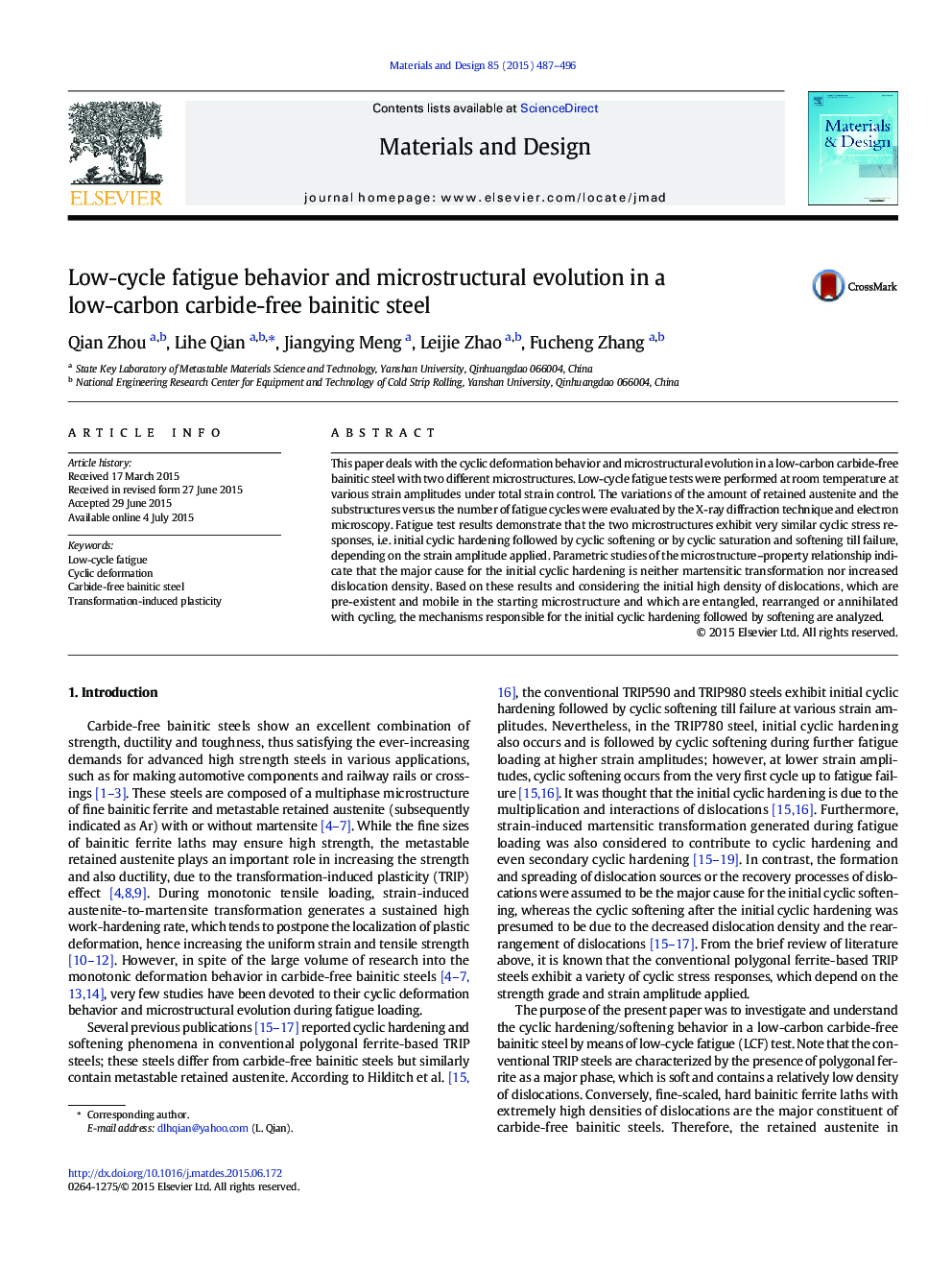| Article ID | Journal | Published Year | Pages | File Type |
|---|---|---|---|---|
| 828321 | Materials & Design | 2015 | 10 Pages |
•Cyclic plastic strain does not cause notable austenite-to-martensite transformation.•Initial cyclic hardening is not due to strain-induced martensitic transformation.•Dislocation density decreases with cycling from the very first cycle.•Interactions of pre-existent high-density dislocations cause initial cyclic hardening.
This paper deals with the cyclic deformation behavior and microstructural evolution in a low-carbon carbide-free bainitic steel with two different microstructures. Low-cycle fatigue tests were performed at room temperature at various strain amplitudes under total strain control. The variations of the amount of retained austenite and the substructures versus the number of fatigue cycles were evaluated by the X-ray diffraction technique and electron microscopy. Fatigue test results demonstrate that the two microstructures exhibit very similar cyclic stress responses, i.e. initial cyclic hardening followed by cyclic softening or by cyclic saturation and softening till failure, depending on the strain amplitude applied. Parametric studies of the microstructure–property relationship indicate that the major cause for the initial cyclic hardening is neither martensitic transformation nor increased dislocation density. Based on these results and considering the initial high density of dislocations, which are pre-existent and mobile in the starting microstructure and which are entangled, rearranged or annihilated with cycling, the mechanisms responsible for the initial cyclic hardening followed by softening are analyzed.
Graphical abstractFigure optionsDownload full-size imageDownload as PowerPoint slide
